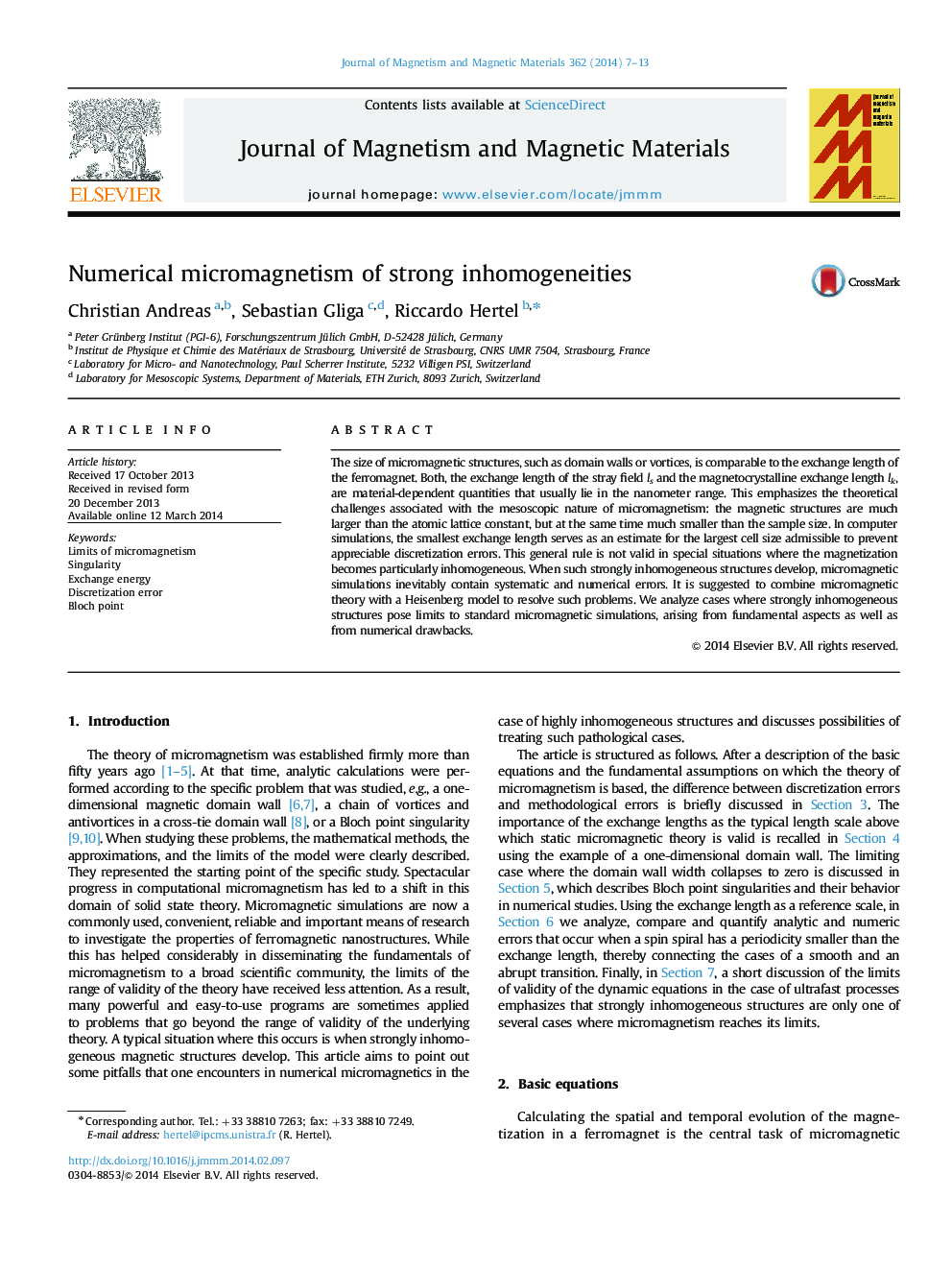| Article ID | Journal | Published Year | Pages | File Type |
|---|---|---|---|---|
| 8156951 | Journal of Magnetism and Magnetic Materials | 2014 | 7 Pages |
Abstract
The size of micromagnetic structures, such as domain walls or vortices, is comparable to the exchange length of the ferromagnet. Both, the exchange length of the stray field ls and the magnetocrystalline exchange length lk, are material-dependent quantities that usually lie in the nanometer range. This emphasizes the theoretical challenges associated with the mesoscopic nature of micromagnetism: the magnetic structures are much larger than the atomic lattice constant, but at the same time much smaller than the sample size. In computer simulations, the smallest exchange length serves as an estimate for the largest cell size admissible to prevent appreciable discretization errors. This general rule is not valid in special situations where the magnetization becomes particularly inhomogeneous. When such strongly inhomogeneous structures develop, micromagnetic simulations inevitably contain systematic and numerical errors. It is suggested to combine micromagnetic theory with a Heisenberg model to resolve such problems. We analyze cases where strongly inhomogeneous structures pose limits to standard micromagnetic simulations, arising from fundamental aspects as well as from numerical drawbacks.
Related Topics
Physical Sciences and Engineering
Physics and Astronomy
Condensed Matter Physics
Authors
Christian Andreas, Sebastian Gliga, Riccardo Hertel,
